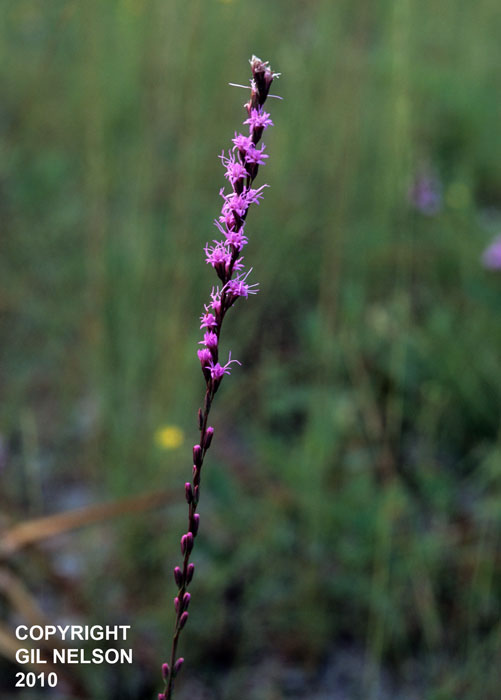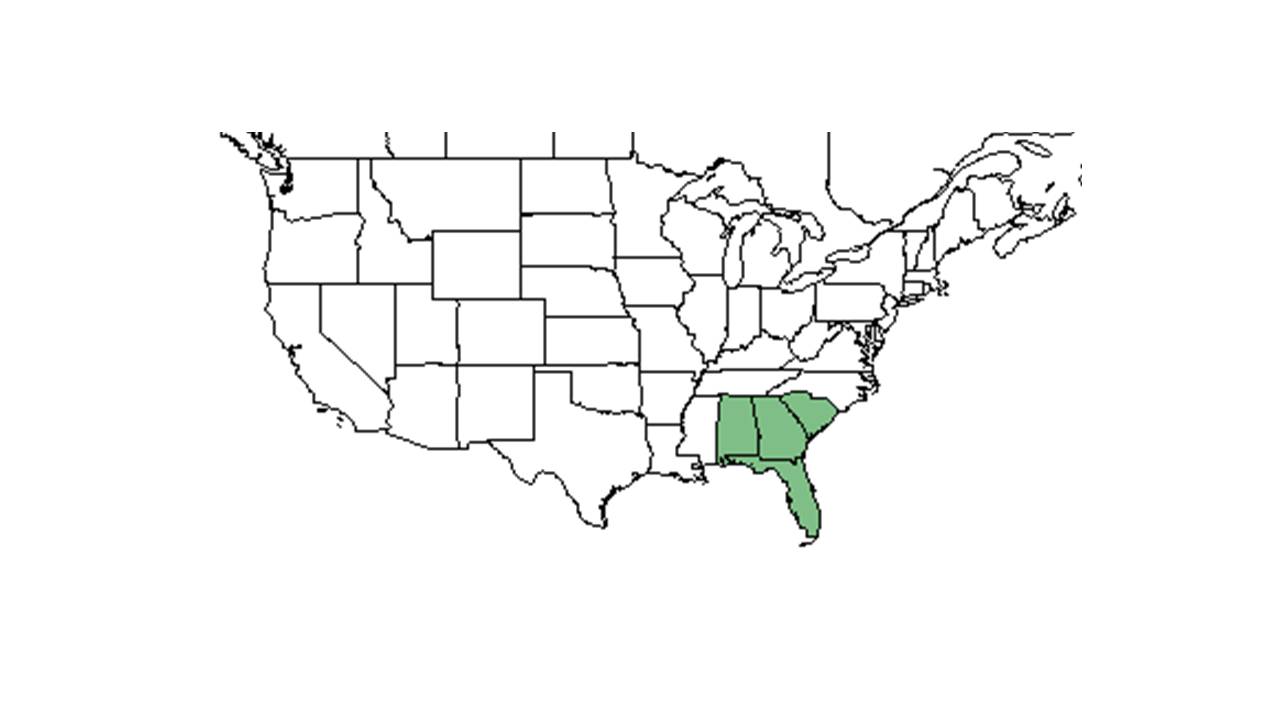Difference between revisions of "Liatris tenuifolia"
(→Pollination) |
|||
| Line 30: | Line 30: | ||
===Fire ecology=== <!--Fire tolerance, fire dependence, adaptive fire responses--> | ===Fire ecology=== <!--Fire tolerance, fire dependence, adaptive fire responses--> | ||
Responds positively to conditions following the burn by increased vegetative growth and flowering. It typically blooms within a year or so following fire.<ref name="Anderson and Menges 1997">Anderson, R. C. and E. S. Menges (1997). "Effects of fire on sandhill herbs: nutrients, mycorrhizae, and biomass allocation." American Journal of Botany 84: 938-948.</ref> | Responds positively to conditions following the burn by increased vegetative growth and flowering. It typically blooms within a year or so following fire.<ref name="Anderson and Menges 1997">Anderson, R. C. and E. S. Menges (1997). "Effects of fire on sandhill herbs: nutrients, mycorrhizae, and biomass allocation." American Journal of Botany 84: 938-948.</ref> | ||
| − | ===Pollination=== | + | ===Pollination=== |
| + | Mark Deyrup at Archbold Biological Station observed these Hymenoptera species on ''Liatris tenuifolia'' | ||
| + | |||
| + | Apidae: Apis mellifera | ||
| + | |||
| + | Apidae: Bombus impatiens | ||
| + | |||
| + | Apidae: Bombus pennsylvanicus | ||
| + | |||
| + | Halictidae: Agapostemon splendens | ||
| + | |||
| + | Halictidae: Augochlorella aurata | ||
| + | |||
| + | Halictidae: Augochloropsis sumptuosa | ||
| + | |||
| + | Megachilidae: Coelioxys mexicana | ||
| + | |||
| + | Megachilidae: Coelioxys sayi | ||
| + | |||
| + | Megachilidae: Megachile albitarsis | ||
| + | |||
| + | Megachilidae: Megachile brevis pseudobrevis | ||
| + | |||
| + | Megachilidae: Megachile brimleyi | ||
| + | |||
| + | Megachilidae: Megachile petulans | ||
| + | |||
| + | Megachilidae: Megachile texana | ||
| + | |||
| + | Sphecidae: Ammophila procera | ||
| + | |||
===Use by animals=== <!--Herbivory, granivory, insect hosting, etc.--> | ===Use by animals=== <!--Herbivory, granivory, insect hosting, etc.--> | ||
===Diseases and parasites=== | ===Diseases and parasites=== | ||
Revision as of 18:30, 26 June 2015
| Liatris tenuifolia | |
|---|---|

| |
| Photo taken by Gil Nelson | |
| Scientific classification | |
| Kingdom: | Plantae |
| Division: | Magnoliophyta - Flowering plants |
| Class: | Magnoliopsida – Dicotyledons |
| Order: | Asterales |
| Family: | Asteraceae ⁄ Compositae |
| Genus: | Liatris |
| Species: | L. tenuifolia |
| Binomial name | |
| Liatris tenuifolia Nutt. | |

| |
| Natural range of Liatris tenuifolia from USDA NRCS Plants Database. | |
Contents
Description
Distribution
Ecology
L. tenuifolia experienced increased growth and flowering in burned sandhill sites located in south-central Florida.[1] Also found in burned and unburned patches of degraded longleaf pine sandhill.[2]
Habitat
Availability of all soil inorganic nutrients examined (Ca, K, Mg, and P) was low, as were total nitrogen, soil organic matter, and pH.[3]
Phenology
Seed dispersal
Seed bank and germination
Fire improves seedling recruitment.[4]
Fire ecology
Responds positively to conditions following the burn by increased vegetative growth and flowering. It typically blooms within a year or so following fire.[3]
Pollination
Mark Deyrup at Archbold Biological Station observed these Hymenoptera species on Liatris tenuifolia
Apidae: Apis mellifera
Apidae: Bombus impatiens
Apidae: Bombus pennsylvanicus
Halictidae: Agapostemon splendens
Halictidae: Augochlorella aurata
Halictidae: Augochloropsis sumptuosa
Megachilidae: Coelioxys mexicana
Megachilidae: Coelioxys sayi
Megachilidae: Megachile albitarsis
Megachilidae: Megachile brevis pseudobrevis
Megachilidae: Megachile brimleyi
Megachilidae: Megachile petulans
Megachilidae: Megachile texana
Sphecidae: Ammophila procera
Use by animals
Diseases and parasites
Conservation and Management
Cultivation and restoration
Photo Gallery
References and notes
- ↑ Anderson, R. C. and E. S. Menges (1997). "Effects of fire on sandhill herbs: nutrients, mycorrhizae, and biomass allocation." American Journal of Botany 84: 938-948. Reinhart, K. O. and E. S. Menges (2004). "Effects of re-introducing fire to a central Florida sandhill community." Applied Vegetation Science 7: 141-150.
- ↑ Heuberger, K. A. and F. E. Putz (2003). "Fire in the suburbs: ecological impacts of prescribed fire in small remnants of longleaf pine (Pinus palustris) sandhill." Restoration Ecology 11: 72-81.
- ↑ 3.0 3.1 Anderson, R. C. and E. S. Menges (1997). "Effects of fire on sandhill herbs: nutrients, mycorrhizae, and biomass allocation." American Journal of Botany 84: 938-948.
- ↑ Whelan, W.A. 1970. Patterns of recruitment to plant populations after fire in western Australia and Florida. Proceedings of the Ecological Society of Australia 14:169-178.